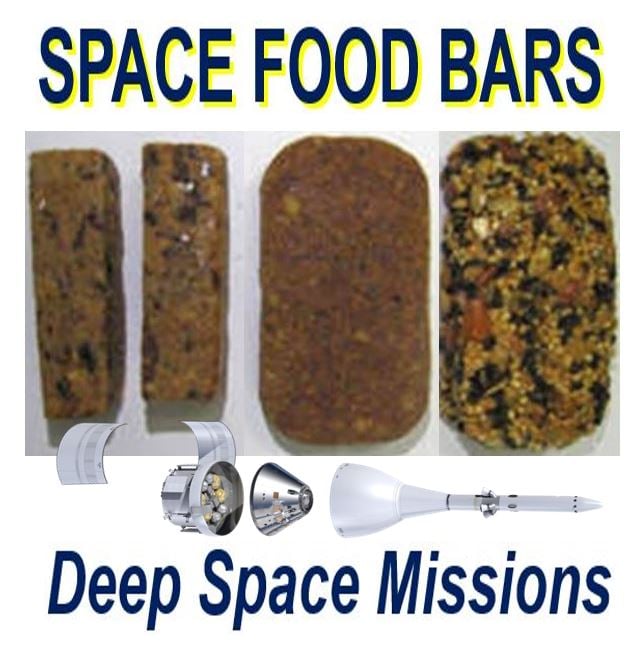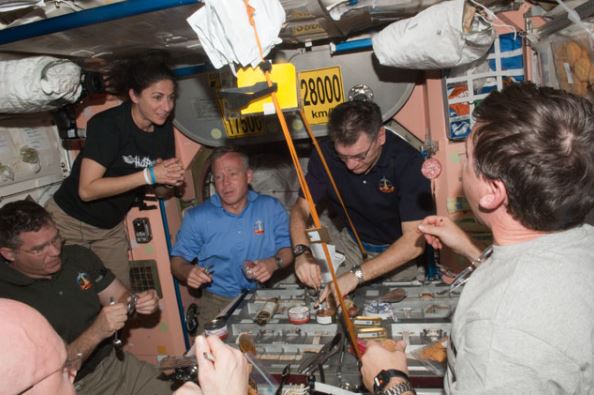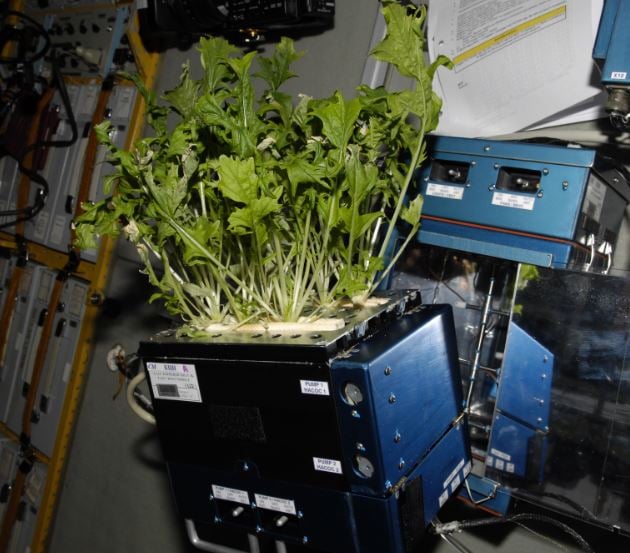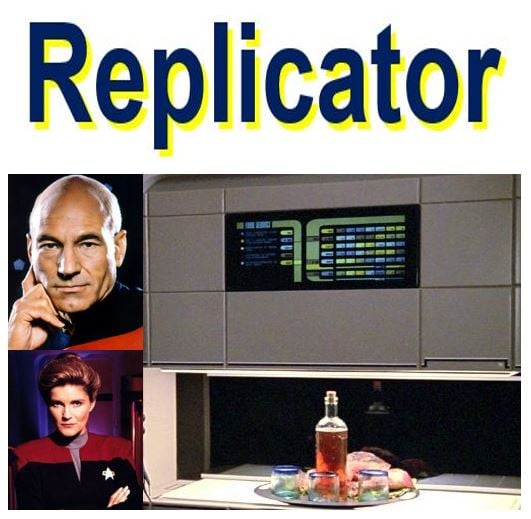Space food bars are aimed at keeping astronauts healthy, sharp and with a good body weight, while at the same time not using up too much valuable storage room in the International Space Station or a long-mission spacecraft like Orion, says NASA.
When humans travel beyond the moon in the Orion spacecraft, they will need to consume space food bars for several months and even years.
In the International Space Station (ISS) astronauts are relatively spoiled for choice – with over 200 items to choose from for their meals. The ISS will be a gourmet’s delight in comparison to what will be available in the Orion.
 To help minimize cargo supplies that Orion carries for its crew, food scientists are developing a range of space food bars that astronauts can consume for breakfast during their deep space missions. (Image: Adapted from nasa.gov)
To help minimize cargo supplies that Orion carries for its crew, food scientists are developing a range of space food bars that astronauts can consume for breakfast during their deep space missions. (Image: Adapted from nasa.gov)
While the ISS is a mere 400 kilometers (248 miles) from Earth and regularly receives supplies from the ground, Orion will be several tens of millions of miles away, and its crew will have to make do with just one load – the initial one before lift off.
Making space food bars for Orion crew
According to Jessica Vos, deputy health and medical technical authority for Orion, feeding the crew on deep space missions presents a number of unique challenges that NASA scientists are currently working to resolve.
There is not much room for storing food and other supplies that the astronauts will need during the missions on Orion.
Given the huge distances that Orion will travel, scientists need to limit the spacecraft’s mass. A heavy craft requires more fuel and energy to propel it to its remote destination.
To help minimize the amount of supplies Orion will have on board for its crew, scientists are working on a variety of space food bars that astronauts can eat at breakfast time during their missions.
 Eating aboard the International Space Station: 1. Minimize crumbs (they get everywhere). 2. Minimize packaging and trash volume. 3. Minimize weight. 4. Have foods with a very long shelf-life. 5. Most foods are in cans or in plastic bags. 6. Fresh foods are occasional treats. (Image: kitchen.menu4mars.net)
Eating aboard the International Space Station: 1. Minimize crumbs (they get everywhere). 2. Minimize packaging and trash volume. 3. Minimize weight. 4. Have foods with a very long shelf-life. 5. Most foods are in cans or in plastic bags. 6. Fresh foods are occasional treats. (Image: kitchen.menu4mars.net)
Energy bars and shakes are popular in the United States as part of breakfast, or as a total replacement for the first meal of the day. Food scientists have determined that if they developed a single space food bar, rich in calories, they could accomplish two things:
– Keep the astronauts well fed and healthy.
– Meet the mass reduction requirements, i.e. keep the cargo load to a minimum.
NASA’s breakfast space food bars
Regarding NASA’s space food bars, Vos said:
“When you have 700 to 900 calories of something, it’s going to have some mass regardless of what shape it’s in, so we’ve taken a look at how to get some mass savings by reducing how we’re packaging and stowing what the crew would eat for breakfast for early Orion flights with crew.”
“When you think about multi-week missions in Orion, having just one package for breakfast items for crew will help us limit the space we need to store them.”
ISS crew members typically pull the breakfast they desire from a range of available options, including items from rehydratable or thermostabilized packages.
Thermostabilized foods are heated up during processing so that they are free of pathogens (harmful microorganisms) and enzymes, while rehydratable foods are dried out completely before flight to save weight, and rehydrated (water added) before they are consumed.
 Ever since the International Space Station started orbiting Earth, research has been ongoing to determine how vegetables grow in space. (Image: nasa.gov)
Ever since the International Space Station started orbiting Earth, research has been ongoing to determine how vegetables grow in space. (Image: nasa.gov)
Flavor options for Orion crew
Vos and colleagues aim to have a number of food bars from a range of flavors on Orion, including barbeque nut, cranberry, or orange for breakfast. It may not sound exciting, but the priorities are to feed the crew members, keep the spacecraft light, and occupy as little cargo space as possible.
For their other two meals – lunch and dinner – deep space mission astronauts will be able to select from similar items that ISS crew member currently have. Orion will also have a food warmer to help them prepare their meals.
Food experts say that designing a space food bar to a specific nutritional balance for humans, while at the same time increasing caloric density is no small task – it is even more challenging when you are required to pass the taste test too.
Food scientist, Takiyah Sirmons, who works at NASA’s Johnson Space Center in Houston with the Advanced Food Technology team, said:
“There’s no commercially-available bar right now that meets our needs, so we’ve had to go design something that will work for the crew, while trying to achieve a multi-year shelf-life.”
 What would Star Trek Captains Picard and Janeway make of our deep space mission foods without their beloved ‘replicators’?
What would Star Trek Captains Picard and Janeway make of our deep space mission foods without their beloved ‘replicators’?
Maintaining morale of astronauts
Maintaining good crew morale is crucial on mega-long space missions. Food choice, taste and variety have an impact on overall morale. As mission lengths increase, food scientists will have to focus on maintaining crew moral, keeping them healthy and not overloading the spaceship.
The space food bars are being researched and developed in coordination with NASA’s Human Research Program. Tests have been carried out using crew members as guinea pigs inside HERA, which NASA describes as a “unique three-story habitat designed to serve as an analog for isolation, confinement, and remote conditions in exploration scenarios.” In other words, a house on Earth where astronauts practice living in space.
The HERA missions have provided useful feedback on the texture, flavor, and long-term acceptability of the space food bars. Food scientists are tweaking with ingredients and features and say they are making excellent progress.
These ground-based missions will ultimately help NASA determine the ideal meal-replacement schedule to prevent food aversion and fatigue on deep space missions.
While food scientists carry on honing the space food bars and expand the choice of items available, NASA is also working to develop regenerative ways to feed the astronauts on deep space missions, including during the journey to Mars.
A vegetable production system has been underway on the International Space Station for a number of years. Scientists say that we now know much more about growing fresh vegetables in space compared to ten years ago.
Astronaut Shane Kimbrough has just started a vegetable production in space investigation aboard ISS.
Space food bar packaging
Apart from keeping the cargo load to a minimum, feeding the human travelers and keeping them physically healthy and mentally motivated, food scientists are also looking at packaging food items to keep them nutritious and edible in conditions where temperatures can fluctuate sharply, such as on the surface of Mars.
Orion is expected to fly into space with humans on board as early as 2021, atop the powerful Space Launch System rocket which is currently under development.
Orion’s maiden flight will help set the stage for future missions in the proving ground around the Moon and beyond, where NASA will refine the technology and operations required to transport astronauts to the Red Planet.
Video – Space food bars for Orion crew
In this NASA video, Jessica Vos and Takiyah Simmons talk about their research and development work on space food for Orion crew members.

